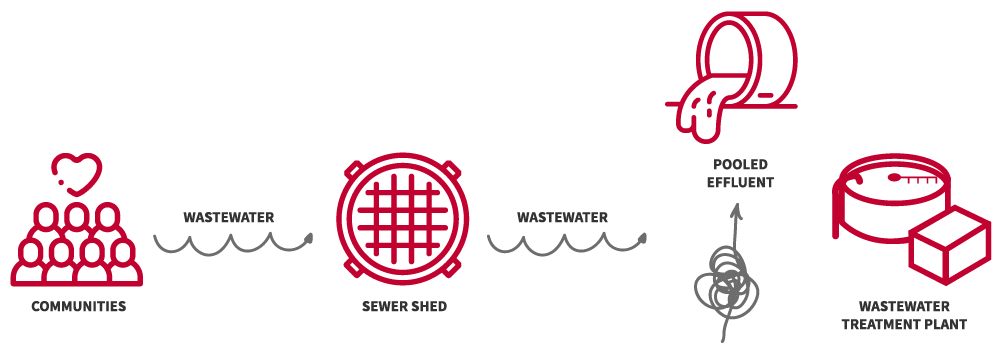Laboratory
Wastewater-based epidemiology: a tool for monitoring SARS-CoV-2
Feb. 14 2021
Analytical testing of wastewater to track population health, particularly in response to pathogens, was used in Finland and Senegal as early as the 1980s to monitor the progression of the polio vaccine. The term of wastewater-based epidemiology (WBE), however, was only introduced in 2001 as a hypothesis that monitoring wastewater for drug residues would offer a good assessment of usage in large populations. In 2005, WBE was formally put into practice to investigate the usage of illicit drugs in communities.
Today, WBE is a rapidly growing, albeit relatively new, field of monitoring the health and behavior of a population at large by testing for specific biomarkers in wastewater samples. It has been expanded to address:
- Pathogens (virus and bacteria),
- Resistant genes (antibiotic resistance),
- Pharmaceuticals (pain killers, endocrine disruptors, etc.), and
- Lifestyle characteristics (i.e. alcohol and tobacco consumption, use of illicit drugs, etc.).
The principle of WBE leverages the convenience of the sewer shed pooling waste from a large number of people on a daily basis:
WBE can therefore provide monitoring on a variety of population sizes, from small institutions such as education campuses to individual neighborhoods and large city populations. Based on the design of the sewer shed and catchment areas, wastewater samples may be collected at different locations to facilitate identification of outbreaks and hotspots. However, consideration must be given to flow rate, relative population size and major weather events that may influence data interpretation.
MONITORING INFECTIOUS DISEASES – IMPORTANCE OF WASTEWATER TESTING
Infectious diseases have been identified as some of the most critical threats to global public health. In 2019, the World Health Organization (WHO) identified pandemic influenza, HIV, dengue and high threat pathogens (such as Ebola) as 4 of the top 10 threats to global health. Typical incubation periods of infectious diseases generally exceed even the lengthiest international flights. This means that outbreaks can no longer be contained by geography in today’s world. Robust options are therefore needed for disease surveillance techniques and WBE has become a critical tool worldwide, with large initiatives for ongoing monitoring having been established in Europe, Australia and the United States.
WBE has been extensively used in the past to monitor infectious diseases in populations, such as tracking polio, influenza, hepatitis, norovirus and Ebola. Studies have shown that infected individuals shed pathogens in feces. This occurs whether they are symptomatic or not and likely prior to becoming symptomatic. This suggests the possibility that given a fast enough turn-around time of analysis, WBE could act as a predictive tool. To compliment public health efforts during outbreaks, WBE has also been used to monitor the effectiveness of vaccination programs.
Routine methods of addressing the current COVID-19 pandemic through individual clinical testing has been recognized to be a time consuming approach that will generally miss asymptomatic individuals. Furthermore, by attempting to spread these efforts over a large population, opportunities may be missed to address hotspot areas. WBE data can therefore provide daily snapshots of an entire population, while capturing all infected individuals and maintaining anonymity.
BENEFITS OF USING WBE FOR INFECTIOUS DISEASES
- Cost-effective, fast and near real-time method of monitoring disease prevalence in a large population, as well as efficiency of vaccination;
- Identification of symptomatic and asymptomatic cases offering a more representative measure of prevalence;
- Potentially predictive tool, as wastewater data may precede individual clinical testing; and
- Allows the targeting of public health efforts (such as intense clinical testing and restrictions) in hot-spot areas.
CHALLENGES WITH USING WBE
- Sensitivity of the test can be negatively impacted by daily wastewater volume (dilution from significant weathering events, etc.);
- Processing and extraction of wastewater samples poses matrix challenges (chemical and biological sources of interference and inhibition); and
- WBE requires continuous samples collected to establish a baseline and patterns (for identification of increases in concentration).
